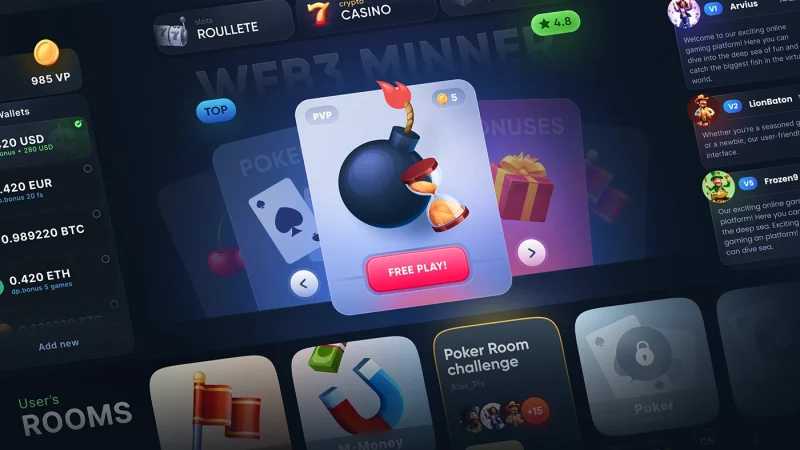Behind the Scenes: The Hidden Tech Powering Your Live Dealer Games
You settle into your chair, click the ‘join table’ button, and a real human dealer greets you with a smile. Cards are dealt, a roulette wheel spins, and the action feels immediate. It’s magic, right? Well, it’s not. It’s a technological symphony—a breathtakingly complex ballet of hardware, software, and pure data wizardry happening just out of sight.
Let’s pull back the curtain. Forget the glamour of the studio for a moment. We’re going backstage, into the server rooms and control booths, to see what really makes the live casino experience tick. It’s honestly more impressive than you might think.
The Nerve Center: Inside the Live Studio
Before a single byte of data hits your screen, it all starts in a highly specialized studio. These aren’t just rooms with tables; they’re broadcasting hubs engineered for perfection.
Eyes Everywhere: The Camera Setup
You know those multiple camera angles you can switch between? That’s no accident. Each table is rigged with a sophisticated array of cameras, each with a specific job.
- Main Game Cameras: These capture the wide shot—the dealer, the table, the whole atmosphere.
- Overhead Cameras: Crucial for game integrity. One is dedicated solely to the roulette wheel, another to the card shuffle and deal. They leave zero room for doubt.
- Pip Cams (Picture-in-Picture): These tight shots focus on the dealer’s hands or the specific betting area, giving you a close-up view of the action.
- Ambience Cameras: These wider shots of the studio build that buzzing, land-based casino feel.
The real magic, though, is the optical character recognition (OCR) camera. This isn’t just any camera. It’s the digital eye that translates physical action into data in real-time.
The Human Element: Dealers and Game Presenters
These are professional broadcasters, not just croupiers. They manage the game flow, interact with players via a monitor, and maintain energy for hours—all under hot lights. They’re the face of the entire operation, and their performance is a huge part of why you stay at the table.
The Digital Brain: Software & Data Transmission
Here’s where the raw video feed gets smart. This is the true engine room of the live casino.
OCR: The Universal Translator
We mentioned OCR. This technology is the absolute cornerstone. The OCR camera tracks everything: the symbols on the roulette wheel as it slows down, the value of the cards as they’re dealt, the dice as they land.
It instantly digitizes this information and sends it to the game server. This is why you see “Dealing cards…” or “Number 22, Red” appear on your screen almost before the physical action is complete. It’s what allows you to place digital bets based on physical events. It’s the critical link between the real and the digital worlds.
The Game Control Unit (GCU): The Little Black Box
Every live casino table has one. This small, unassuming box encodes the video broadcast and, more importantly, works with the OCR software to process all that data. It’s the translator that takes the OCR data, packages it up, and shoots it off to the server. No GCU, no game.
Low-Latency Streaming: The Race Against Time
Latency is the enemy. A delay between the live action and your screen would break the illusion and the fairness. Providers use advanced adaptive bitrate streaming (like a supercharged version of what Netflix uses) to ensure a smooth feed that automatically adjusts to your internet speed.
The goal is to get the stream to you with a delay of often less than three seconds. Considering the video is being encoded, sent to a server, and then distributed globally to your device, that’s a minor miracle of modern engineering.
Connecting the Dots: The User Experience
All this tech is pointless if it doesn’t come together seamlessly on your end. And that’s where the final piece of the puzzle slots in.
The Interface: Your Window to the Game
The graphical overlay where you place your bets, see your balance, and chat with the dealer? That’s rendered locally on your device by the casino’s software. It’s synchronized with the data stream from the GCU. When you click “bet,” that command is sent back to the studio’s server and integrated into the game flow.
Chat Functionality: Talking to the Table
The chat isn’t just a nice-to-have; it’s central to the experience. Your message goes from your device to a server, then to a monitor on the studio floor. The dealer responds verbally, and that audio is mixed into the live video stream you’re receiving. It’s a constant, real-time feedback loop that makes you feel present.
The Future is Already Here: What’s Next?
The innovation never stops. The current behind-the-scenes technology is already evolving to make games even more immersive.
We’re seeing the rise of first-person live dealer games, where the camera is mounted from your perspective at the table. There’s talk of VR and AR integration, potentially placing you virtually inside a casino from your living room. And of course, the relentless pursuit of even lower latency through better global server networks and more efficient codecs.
The next time you join a live blackjack table, take a second. Appreciate the view. But also remember the incredible, hidden journey—from the dealer’s hand, to the OCR camera, through the GCU, across thousands of miles of internet infrastructure, and finally to your screen. It’s a masterpiece of modern technology, all designed for one simple purpose: to deliver a real casino experience, anywhere on earth.








